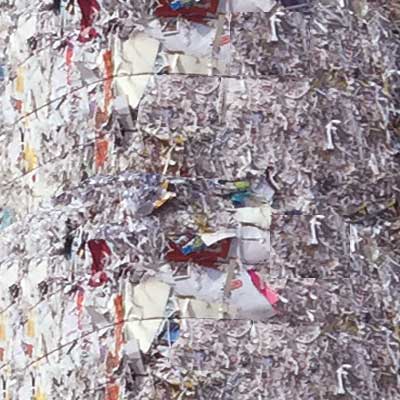The fibers that are already used for paper manufacturing process are known as secondary fiber or recycled fiber. Different grade of waste paper are the sources of it. Even, dry end broke, cutter and finishing section broke are also included in secondary fiber. This fiber is an important part for paper productions. The wastepaper may be printed, unprinted, colored, coated which has to be shorted, graded and baled as a part of better utilization. Considering economical issue Recycled fiber based paper mills usually established in the areas where they can easily collected and transported.

Types of waste paper
There are different grade of secondary fiber such as mixed paper, old news paper, OCC (old corrugated containers) etc. Some of them are adulterated in many ways such as printing, coating, or any other ways. These types of waste paper should be clean or chemical processing to remove contaminants before using as fiber. We can utilize printing grade wastepaper with the help of deinking process. On the other hand, some of them are not adulterated; they can be used directly as pulp substitutes. Office wastepaper, magazines, telephone directories, catalogs, boxboard cuttings etc. includes in mix papers.
The secondary fiber can also categorize as pre-consumer and post consumer basis on their sources. Different plants like converting and printing press are the sources of the pre-consumer paper whereas home, office etc are the sources of the post-consumer waste paper. This wastepaper could be sorted and baled after collection as they are higher contaminant. Internal broke such as repulp, dry end, cutter and finishing broke are also one kind of recycled fiber; while some people don’t consider them as that.
Contaminants of waste paper
There are so many types contaminant like plastic, laminates, adhesives, coating, glues, waxes, asphalt, dyes, dirt etc. may contains in waste paper. To removes contaminant different types of process are used such as screening, cleaning, dispersion, washing, bleaching deinking. To utilize the secondary fiber effectively the contaminant should be removed from the wastepaper. Most of the contaminants are removes in pulper and deflakers.
Properties of secondary fiber
The strength, bonding potential, tensile strength, burst and tear factor will be lower with the times of recycle. Drying is the main factors for reducing the strength properties. Moreover, the fiber secondary also losses it’s flexibilities and permeable to water. They have a lower yield percentage. Moreover, they can increase slime accumulation.
Secondary fiber utilization
The characteristics of virgin fiber and secondary fiber are different, so it should be considered as different furnished. Generally, recycled fiber may contain some contaminants like waxes, glues, inks or different dissolved solids. They will impact on papermaking process. They can precipitate on wire clothes, dandy roll, press felt, press rolls, dryer screen, dryer cylinder or calender surfaces which will affect on runnabiliy and paper quality. Different types of small and larger particles in white water systems may visible as dirt and spots or creates holes in the paper products. Recycled fiber consumption increases in some countries particularly in North American countries and European countries, Japan, China but rest of the countries utilizes minimum amount.
Impact on Environment
The using of waste paper plays an important role to protect our environment. It helps the environment by conserving the natural plants. It keep clean the earth, air and water.
How many times can paper be recycled
The quality and effectiveness of the fiber remains up to 4 or 5 times recycle. After four or five times recycles, the fiber losses its physical properties greatly and increases the fines content rapidly which is responsible for reduction in stock drainage. But some people believed the recycle times can be five to seven times which is depends on recycling process.
Conclusion
As the secondary fiber losses its strength related properties, bonding capacity, purity and quality; so it is better to mix with virgin fiber for producing quality paper.

Dear sir,
Paper pulping process and Main required materials clearly explain well the above article, really it’s very important to that industry doing people
I am personally thanks to you and company given chance to update knowledge about waste paper recycling
Your’s truly
Anura liyanage
Hello, im intresting in buy scrap poly ice cream cups, cinema cups , shrimp envelope.
All recycle
200 tons monthly
Colombia
Since manuscripts are subject to deterioration